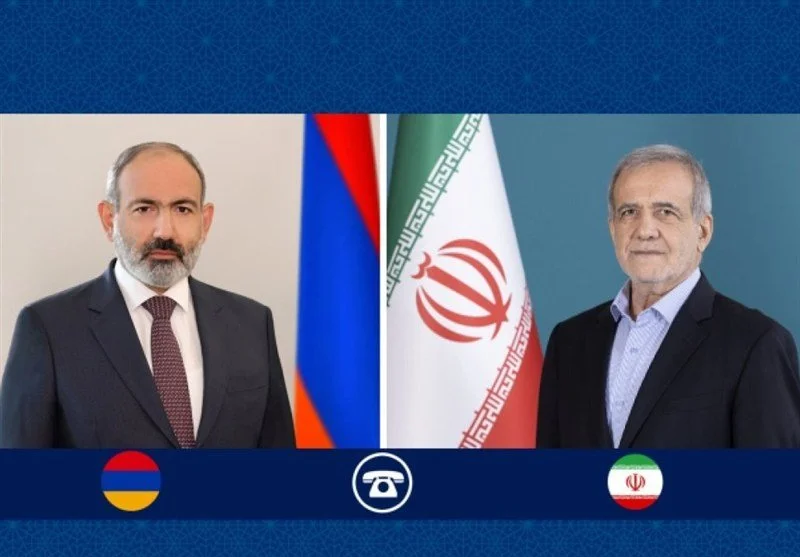Iran Prepares for Renewed Conflict as Peace Talks with the U.S. and Israel Falter
Executive Summary
Despite a highly lethal Israeli strike campaign and public claims of U.S. success against Iran’s nuclear program, Iran is signaling its determination to prepare for further conflict. Tehran is rearming its regional proxy network, intensifying internal security measures, and continuing to project defiance both diplomatically and militarily. The ceasefire has failed to produce meaningful de-escalation, as mysterious explosions, renewed proxy activity, and stalled negotiations all point to an unstable and dangerous status quo.
Key Judgements
1. Iran and its proxies are actively preparing for renewed hostilities with Israel and the United States, viewing the current ceasefire as temporary and the threat environment as persistent.
Evidence: Meetings between IRGC-QF leadership and Iraqi militias warning of imminent Israeli attacks; public statements from Iranian military leadership about readiness for a new conflict; ongoing UAV and missile attacks in Iraq and Kurdistan following the ceasefire (Long War Journal).
2. Iran’s regional proxy network remains a central pillar of its deterrence and bargaining strategy, despite recent attrition from Israeli and U.S. operations.
Evidence: Continued attempts to rearm Hezbollah in Lebanon, Houthi attacks on commercial vessels in the Red Sea, drone strikes on U.S. companies in Iraqi Kurdistan, and intercepted weapons shipments to Yemen and Lebanon (CNN).
3. Unexplained explosions and a suspicious IRGC general death highlight ongoing covert action against Iran’s security infrastructure, with Israel likely retaining freedom of action inside Iran.
Evidence: A wave of unexplained explosions at sensitive sites in Tehran, Qom, Mashhad, and Tabriz, widely believed to be Israeli operations; contradictory Iranian official statements regarding the death of Brigadier General Gheibparvar; tight internal security in Tehran and reduced civil air traffic over Iran (Long War Journal).
4. Iran is hardening its diplomatic posture, presenting itself as a victim of Western aggression while simultaneously refusing to yield on its nuclear program or proxy activity.
Evidence: Official Iranian statements accusing Israel of unprecedented regional destabilization, rejection of pressure to limit nuclear activities, and appeals to the OIC and UN for action against Israel (Tasnim News).
5. The U.S. administration maintains that recent strikes have set back Iran’s nuclear program by years, but there is analytic disagreement about the effectiveness of these operations.
Evidence: President Trump and DoD assert complete destruction of three major nuclear sites, while independent and early U.S. intelligence assessments suggest only one site was heavily damaged and two remain viable (The Hill).
Analysis
The strategic environment between Iran, Israel, and the United States is characterized by intense uncertainty and the near certainty of continued friction. The lethal Israeli campaign—culminating in direct strikes on Iranian nuclear facilities and the targeted killing of senior IRGC figures—was intended to deter Tehran and cripple its most sensitive programs. However, the resulting operational pause has been short-lived and has not translated into a broader or sustainable de-escalation.
Iranian behavior since the ceasefire illustrates a regime determined to signal both resilience and continued risk. At the operational level, Iranian proxies are rearming and increasing attacks across the region—drones striking U.S. and allied energy infrastructure in Iraq, renewed Houthi action in the Red Sea, and persistent efforts to resupply Hezbollah despite severe setbacks in Lebanon and Syria. While Israel and the U.S. have disrupted many of these efforts, Iran’s ability to coordinate and enable proxy violence persists, complicating any effort to contain escalation or achieve a stable deterrence.
Internally, Iran is experiencing both physical and psychological shocks: a wave of mysterious explosions at high-value sites, suspicious deaths of key security personnel, and visible anxiety in Tehran’s security posture. While the regime insists these are accidents, the pattern, timing, and context strongly suggest continued Israeli covert operations. These operations serve a dual purpose: degrading Iranian capabilities and fueling regime paranoia about internal penetration and instability.
Diplomatically, Tehran is leveraging its status as a target of Western and Israeli strikes to rally support from the OIC, Russia, and China, even as it pointedly refuses to compromise on its nuclear or regional policies. Iranian officials continue to frame the West—especially Israel and the U.S.—as aggressors, maintaining that all nuclear activity is peaceful and that Iran will not surrender to pressure, inspections, or threats. This stance reflects both a deeply ingrained narrative and the regime’s desire to preserve negotiating leverage if and when talks resume.
Meanwhile, the Trump administration’s messaging emphasizes maximum pressure and operational success, but independent assessments remain divided. While U.S. officials insist that all three major nuclear sites were “obliterated,” early intelligence and foreign reporting suggest the possibility that some Iranian enrichment capability survived or could be quickly restored. This analytic divergence is itself a risk factor, as overconfidence in military effects could lead to miscalculation in both Washington and Tehran.
In summary, the ceasefire is more a lull than a foundation for peace. All parties appear to be preparing for the next phase—whether that is renewed large-scale conflict, continued shadow warfare, or eventual talks remains uncertain. However, Iran’s visible preparations, proxy escalation, and the continuing tempo of covert attacks point to an environment where surprise events could rapidly escalate and diplomatic openings remain narrow.
Sources
Iran and its militias brace for another conflict with Israel (Long War Journal)
Mysterious wave of explosions, sudden IRGC death disrupt post-ceasefire calm in Iran (Long War Journal)
Iran Won’t Bow to Pressures: President (Tasnim News)
Nothing has changed’: Iran tries to rearm proxy groups as US talks stall (CNN)
Trump doubles down on claim Iran strike ‘completely destroyed’ nuclear sites (The Hill)


